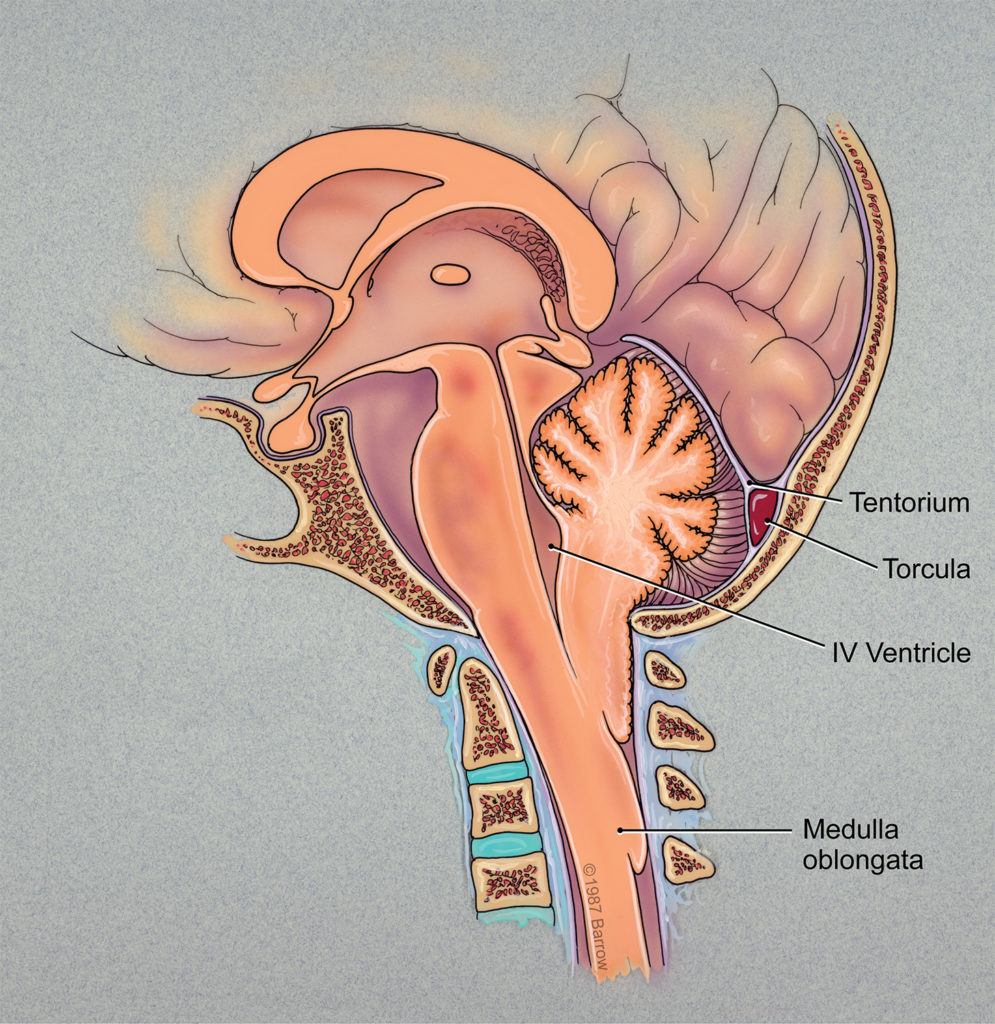
Chiari Malformation
What is Chiari malformation?
A Chiari malformation, also called an Arnold-Chiari malformation, is a structural defect in which brain tissue is pushed down out of the skull and into the spinal canal. This can occur when part of the skull is abnormally small or misshapen.
These malformations are classified into types based on their severity and the parts of the brain protruding into the spinal canal.


Symptoms of Chiari Malformation
Symptoms of an Arnold-Chiari malformation may include:
- Headaches, often made worse by coughing, sneezing, or straining
- Neck pain
- Balance problems
- Muscle weakness
- Numbness or other abnormal feeing in your arms or legs
- Dizziness
- Vision problems
- Difficulty swallowing
- Ringing or buzzing in your ears (tinnitus)
- Hearing loss
- Vomiting
- Insomnia
- Depression
- Problems with hand coordination and fine motor skills
Treatments for Chiari Malformation
Treatment depends on the severity of the malformation and the symptoms it produces. Medications may ease symptoms, such as headaches.
Surgery may be recommended to correct functional disturbances or halt progression of damage to the central nervous system.
The most common procedure for an Arnold-Chiari malformation is posterior fossa decompression, in which a surgeon removes a small section of bone in the back of your skull to relieve pressure on your brain.
Additional Information
Chiari Malformation Classification
Type I – This form is characterized by the extension of the lower part of the cerebellum (a region near the back of the brain that coordinates voluntary movements) into the spinal canal. It is the most common form. Because it may not cause symptoms, it is often found by accident during an examination for another condition. It is the only type of Chiari malformation that can be acquired.
Type II – In this form, tissue from the cerebellum and brainstem extend into the spinal canal. Type II is usually accompanied by myelomeningocele, a form of spina bfida that occurs when the spinal canal and backbone did not close properly before birth.
Type III – This is the most serious form. The cerebellum and brainstem protrude through the opening in the spinal canal and into the spinal cord. It can cause severe neurological symptoms.
Type IV – This is a rare form that involves an incomplete or underdeveloped cerebellum. The lower part of the cerebellum is located in a normal position, but parts of the cerebellum are missing.
How common are Arnold-Chiari malformations?
Arnold-Chiari malformations are uncommon, but they are being diagnosed more frequently with improved imaging tests. Congenital (present from birth) malformations are much more common than acquired malformations.
Who gets Arnold-Chiari malformations?
Symptoms of a type I Arnold-Chiari malformation usually appear during late childhood or adulthood. Symptoms of a type II or III malformation may be diagnosed during pregnancy or in early infancy.
How are Arnold-Chiari malformations diagnosed?
Many Arnold-Chiari malformations are discovered during the course of diagnosis or treatment for another condition because they often do not cause symptoms.
To diagnose this malformation, your doctor may use the following tests:
- Physical examination
- X-ray
- CT scan
- MRI scan



